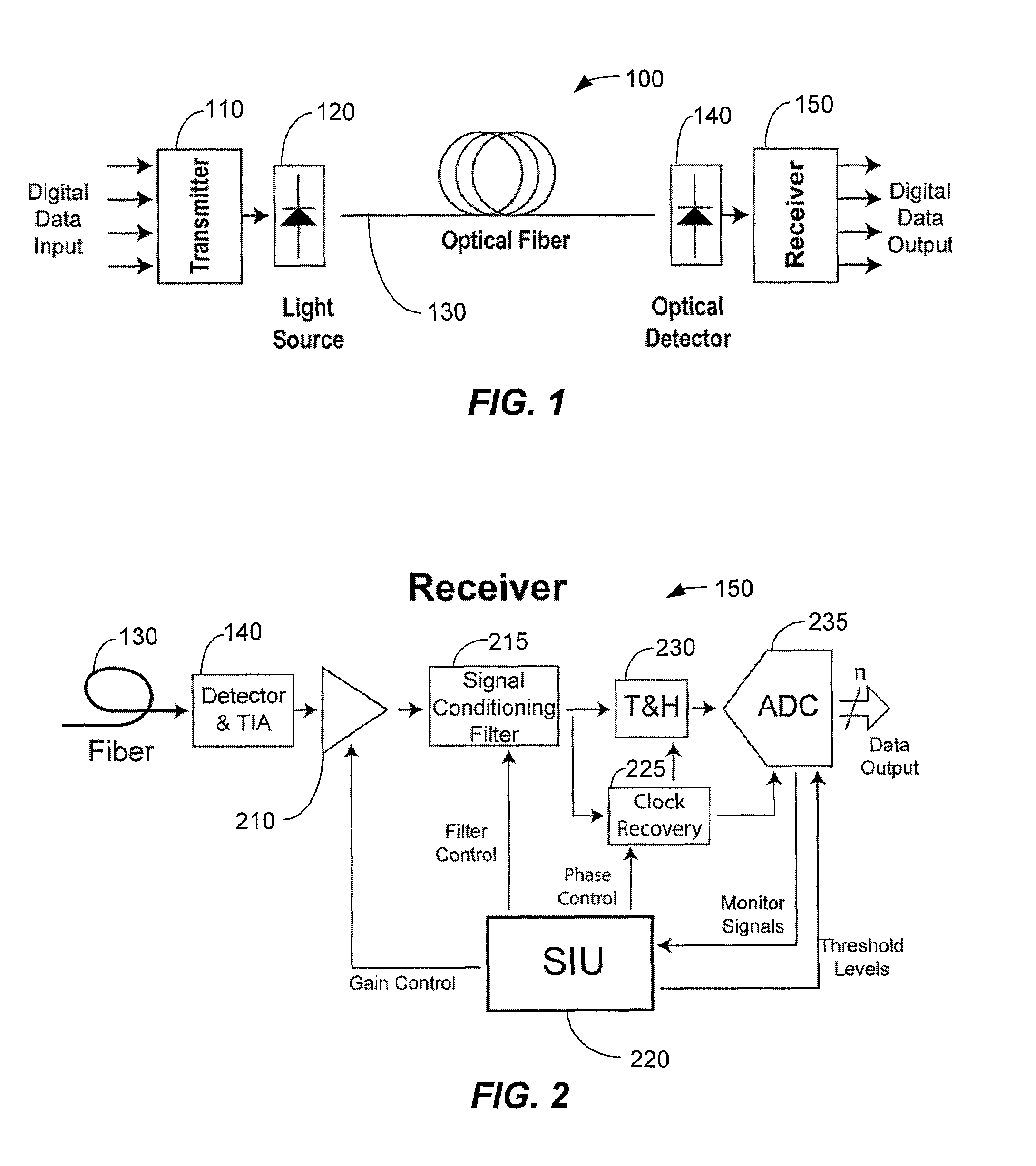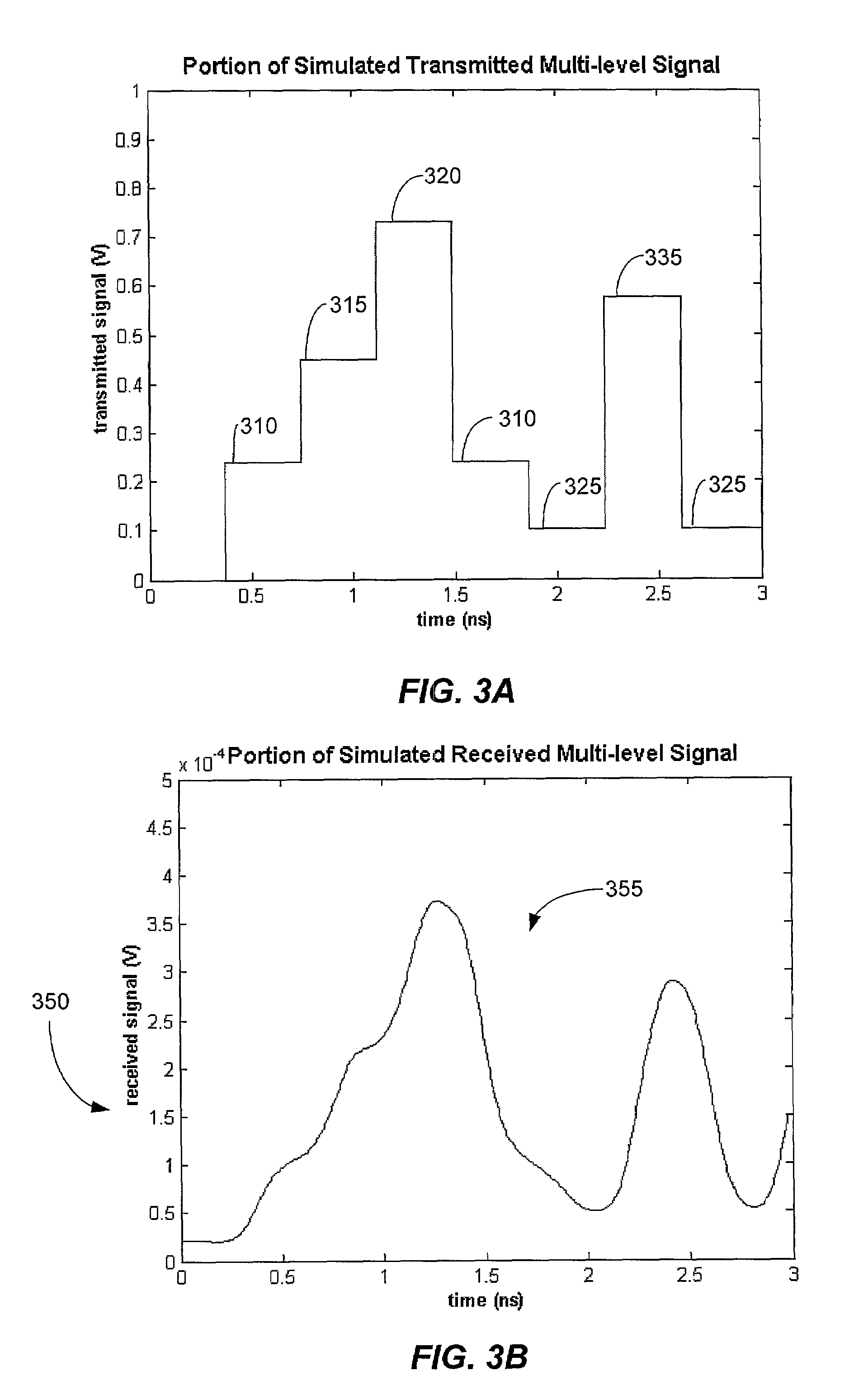Method and system for decoding multilevel signals
a multi-level signal and demodulation technology, applied in the field of optical fiber communication systems, can solve the problems of insufficient demodulation of multi-level signals, insufficient direct analog-to-digital conversion (adc) at a minimum number of bits, and inability to achieve multi-level signal demodulation advantages of conventional hardware and softwar
- Summary
- Abstract
- Description
- Claims
- Application Information
AI Technical Summary
Benefits of technology
Problems solved by technology
Method used
Image
Examples
Embodiment Construction
[0050]The present invention can select a near-optimal set of decision thresholds that can be used by an optical receiver in order to decode a multilevel optical signal. The multilevel optical receiver can comprise a plurality of comparators that generally correspond with the number of levels in a multilevel data stream. Each comparator can be individually controlled and fed a decision threshold in order to decode a particular symbol from a multilevel signal. Alternatively, a high-resolution analog-to-digital converter (ADC) can measure the voltage of the received multilevel signal. The digitized multilevel signal can be provided to a digital signal processor (DSP) which computes the pdf and decision thresholds. The DSP can then use the computed thresholds to decode subsequent digitized symbols from the multilevel signal.
[0051]The present invention typically does not require the assumption of Gaussianity, time-invariance, signal-independence, or binary signaling. Contrary to the conv...
PUM
 Login to View More
Login to View More Abstract
Description
Claims
Application Information
 Login to View More
Login to View More - R&D
- Intellectual Property
- Life Sciences
- Materials
- Tech Scout
- Unparalleled Data Quality
- Higher Quality Content
- 60% Fewer Hallucinations
Browse by: Latest US Patents, China's latest patents, Technical Efficacy Thesaurus, Application Domain, Technology Topic, Popular Technical Reports.
© 2025 PatSnap. All rights reserved.Legal|Privacy policy|Modern Slavery Act Transparency Statement|Sitemap|About US| Contact US: help@patsnap.com



